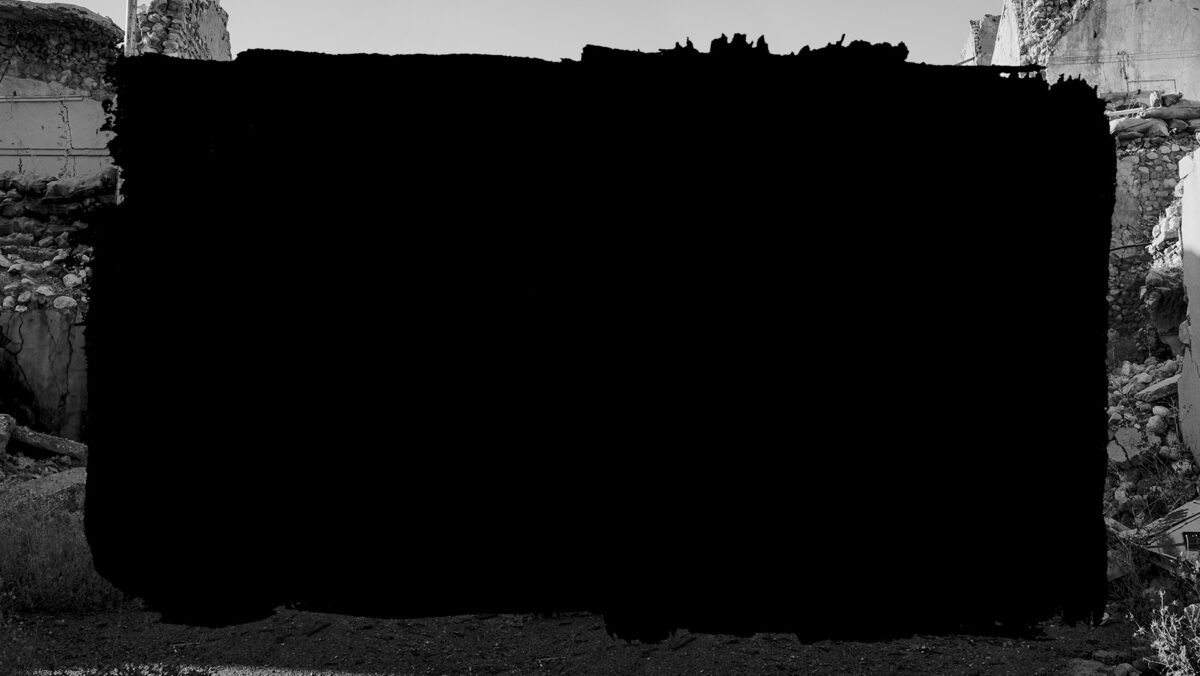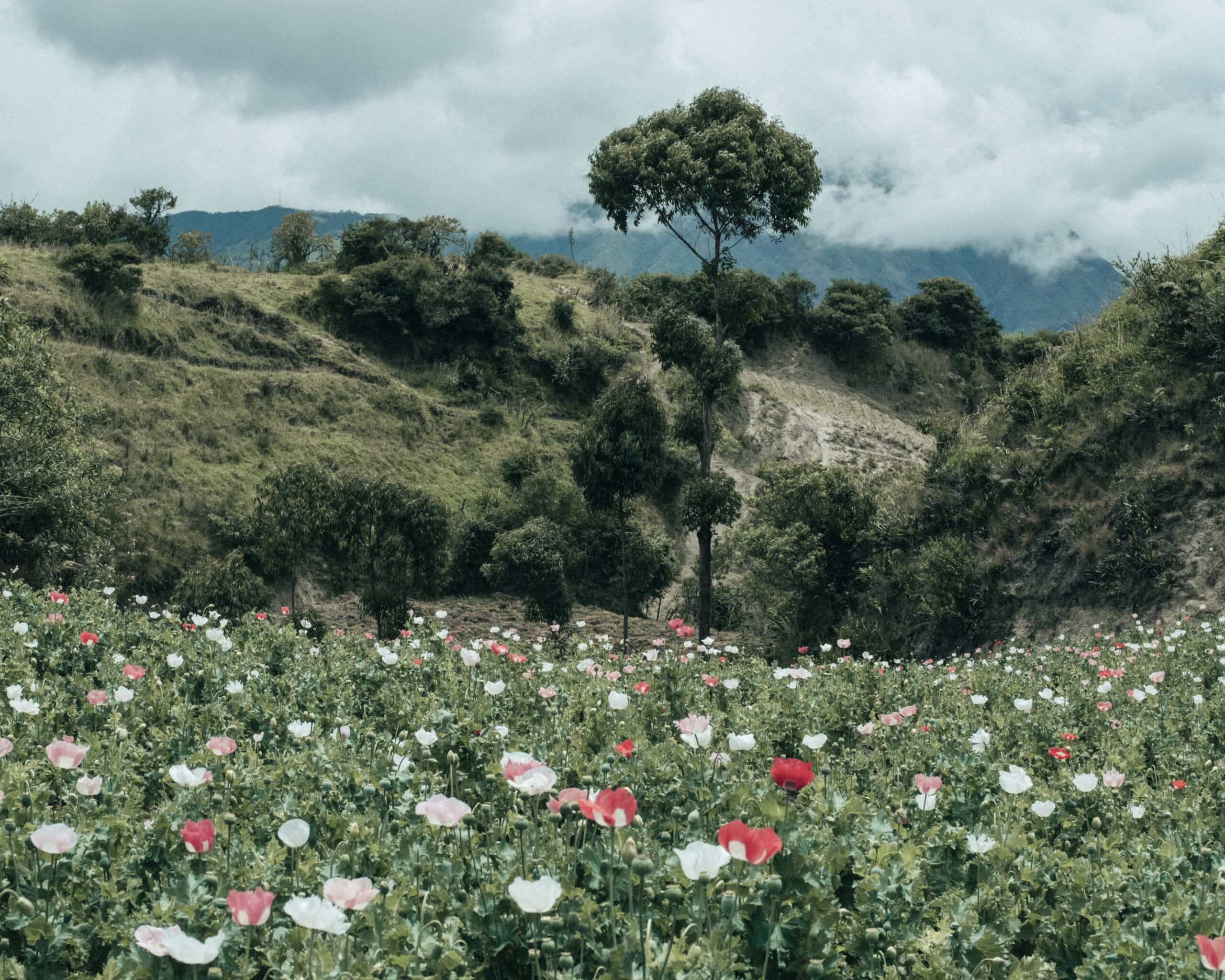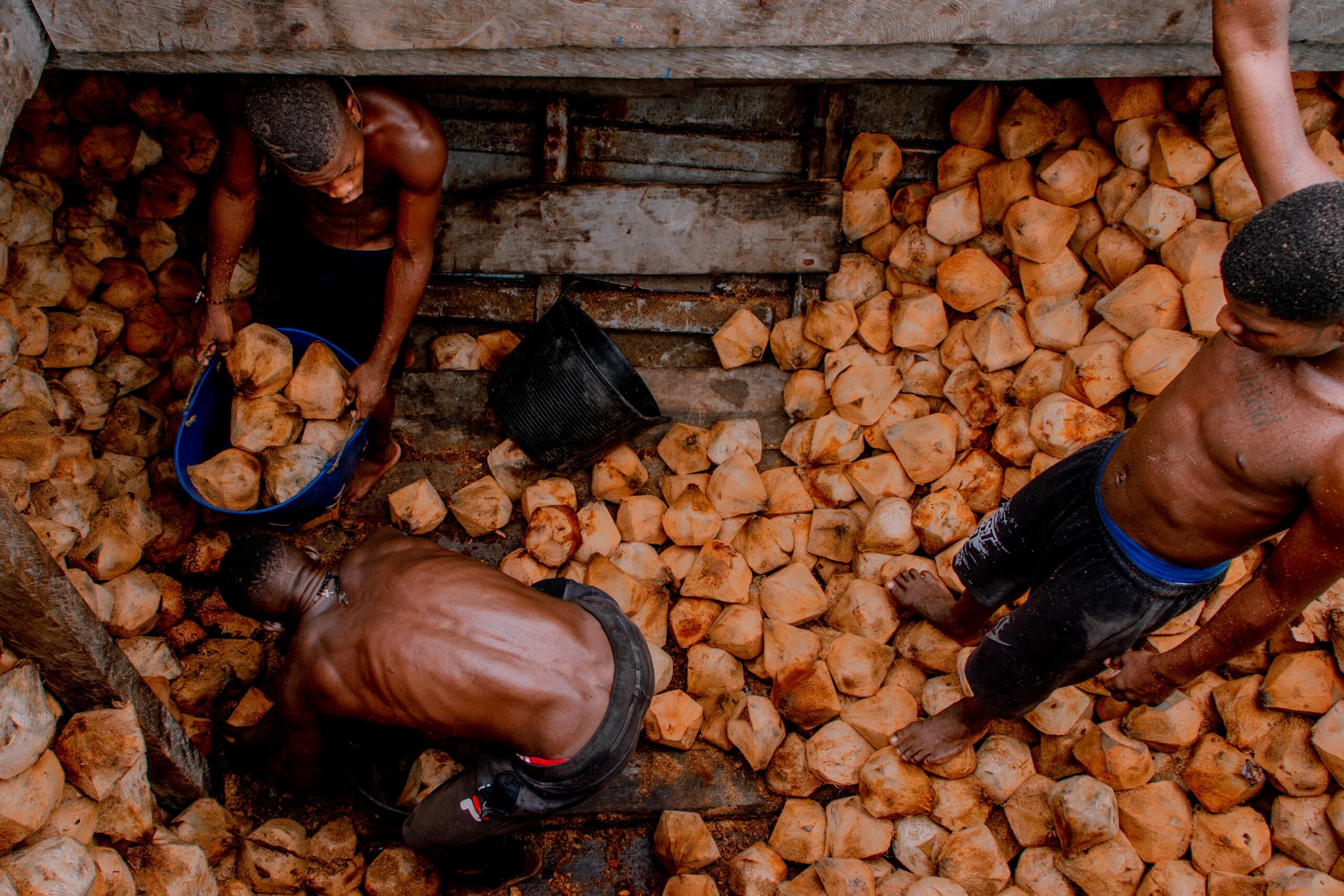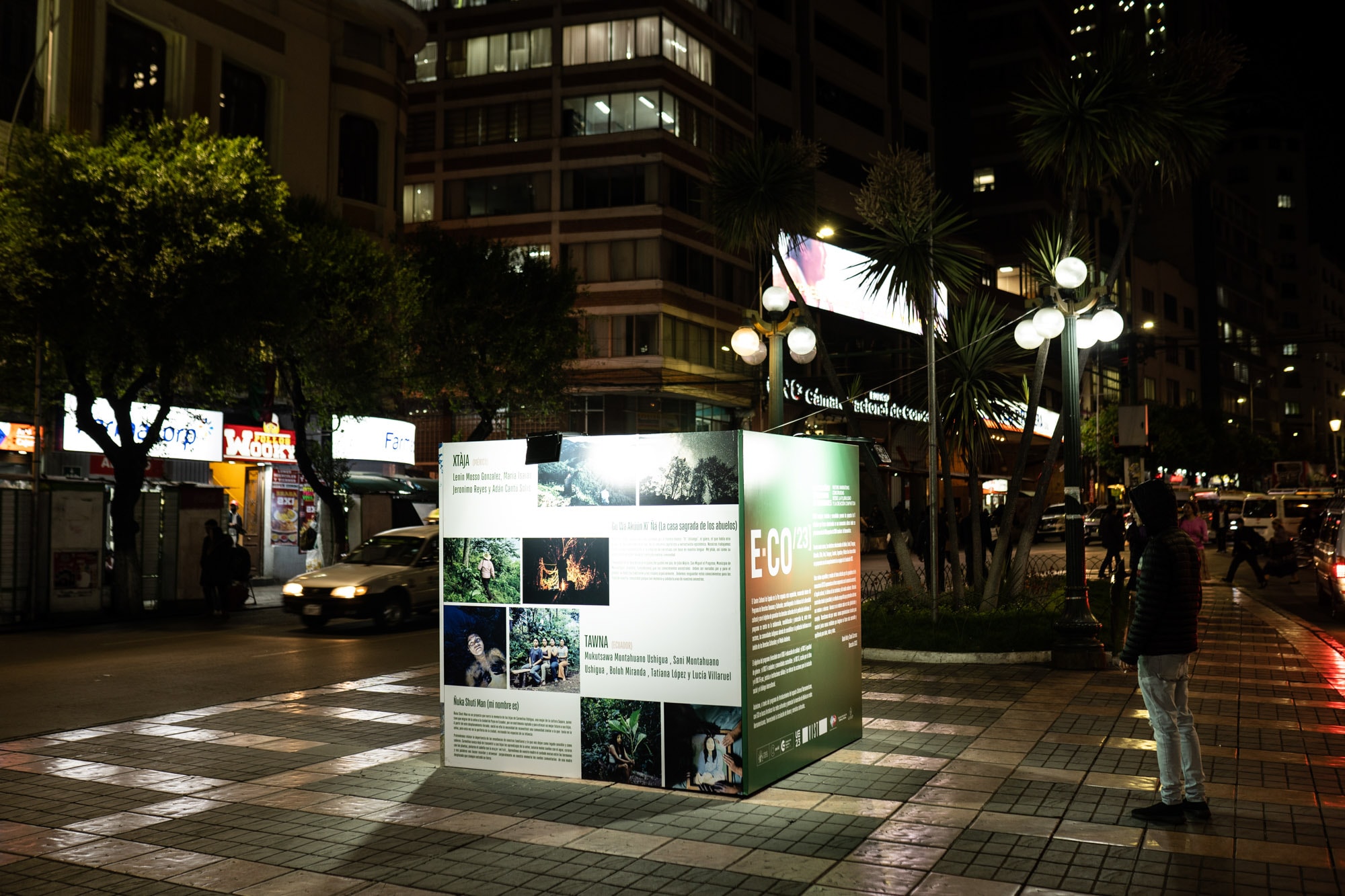
The Image Turn, Part I: From the Collective to the Collaborative
The latest edition of the E·CO Collectives Meeting seems to have been one of those moments that mark profound changes in how we perceive things. I followed the conversations that took place in La Paz between October 24 and 26, 2023, with great attention, trying to glimpse the bets on the future that were framed there.
E·CO is an event that has already had five editions, including the one held this year, but it began several decades ago in 2008 when it had its first edition in São Paulo at the Galería Olido, with the participation of around 8 photographic collectives like No photo, Cia de Foto, Pandora, Supay Photo, etc. Its second edition was in 2010 in Spain, at La Tabacalera in Madrid. The third and the largest edition took place in 2014, once again in Brazil, in the city of Santos. This, which was almost the last edition, involved about 80 artists from 20 photographic collectives in exhibitions, a container city built on the seashore, and many activities around it. Due to the size and complexity of the 2014 edition, its co-creator and director Claudi Carreras thought that the E·CO story had come to an end. Until then, E·CO events were exclusively designed for photographic collectives in Iberoamerica.
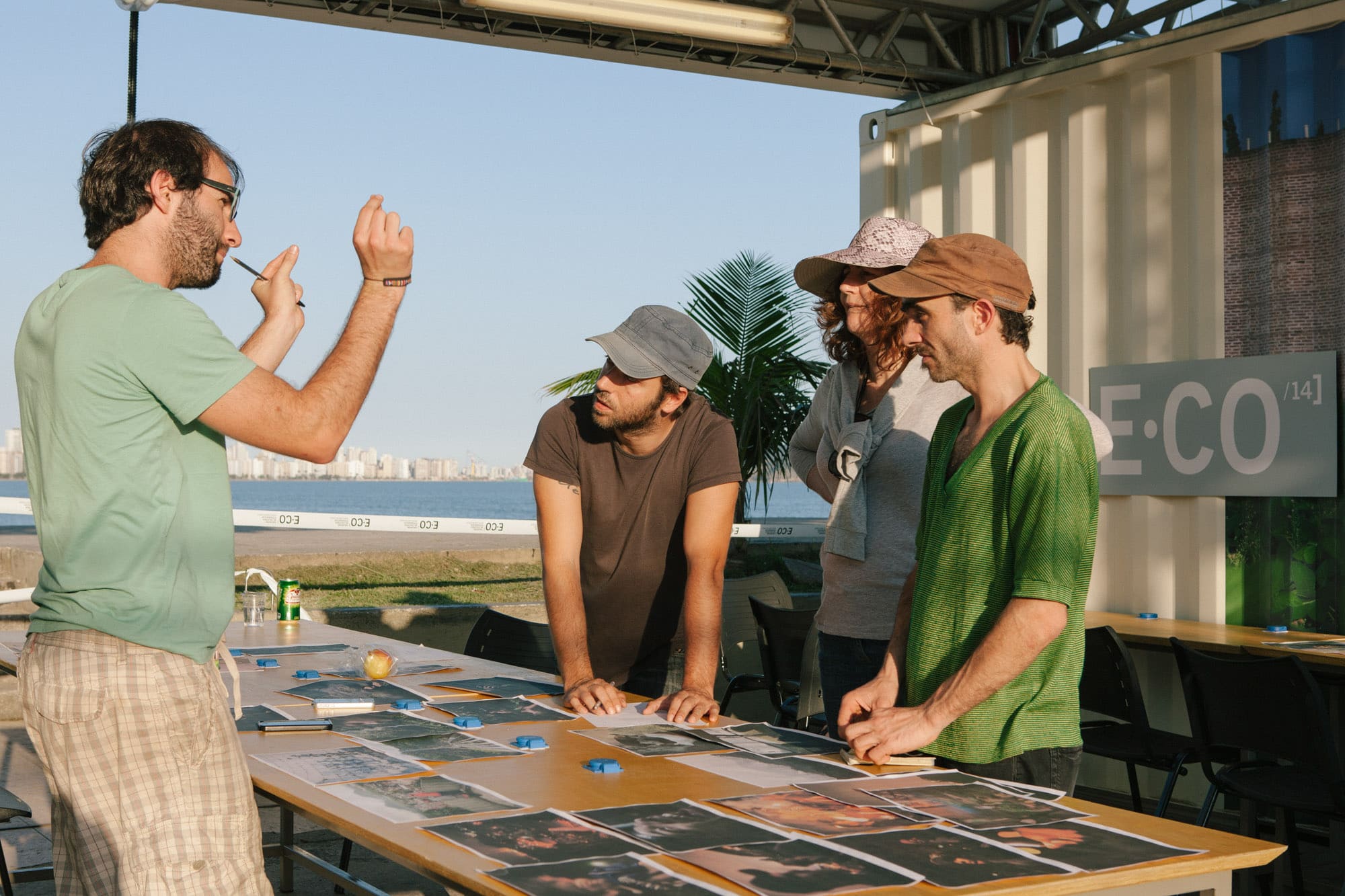
The Collective Meeting in its first three editions brought together more than 40 collectives from all over Latin America, as well as Portugal and Spain. The proposal revolved around collective photographic work, the mixing of these collectives, and the creation of a new formation to produce a joint work that was publicly exhibited at the end of the event. I participated in E·CO 2014, and I can tell you firsthand that it was one of the most vigorous and interesting experiences I’ve ever had. It deeply marked me, and from there, ideas, inspirations, work colleagues, and friends that accompany me to this day emerged.
It was also a significant and decisive experience for Gisela Volá, a member of the Cooperativa Sub, a collective that has participated in all editions of E·CO and doesn’t spare words in praising what her experience has been. In fact, she was the person who convinced Claudi Carreras to resume E·CO after an 8-year hiatus. Gisela says that those meetings transformed her, and their impact and importance for the participants are immeasurable. So, in 2022, now under the production of Vist Projects, E·CO returned for its fourth edition, with Gisela Volá as the director alongside Claudi Carreras. Then, in 2023, we had the fifth edition that concluded a few days ago.
The reconfiguration of E·CO reflects, in addition to the meeting of the different experiences of the directors, the changes that have been occurring in sectors of society and in the field of the image. Focused on rethinking and changing the ways in which we produce visual narratives, they have proposed a new format based on questions like: Who has the power to narrate? Where do they do it from? How and why do they do it? Whose images represent Latin America and its people? Who has controlled that identity? How have the identity paradigms that lead us to look at people as we do today been created? How to deconstruct the stereotypical gaze that has predominated until now?
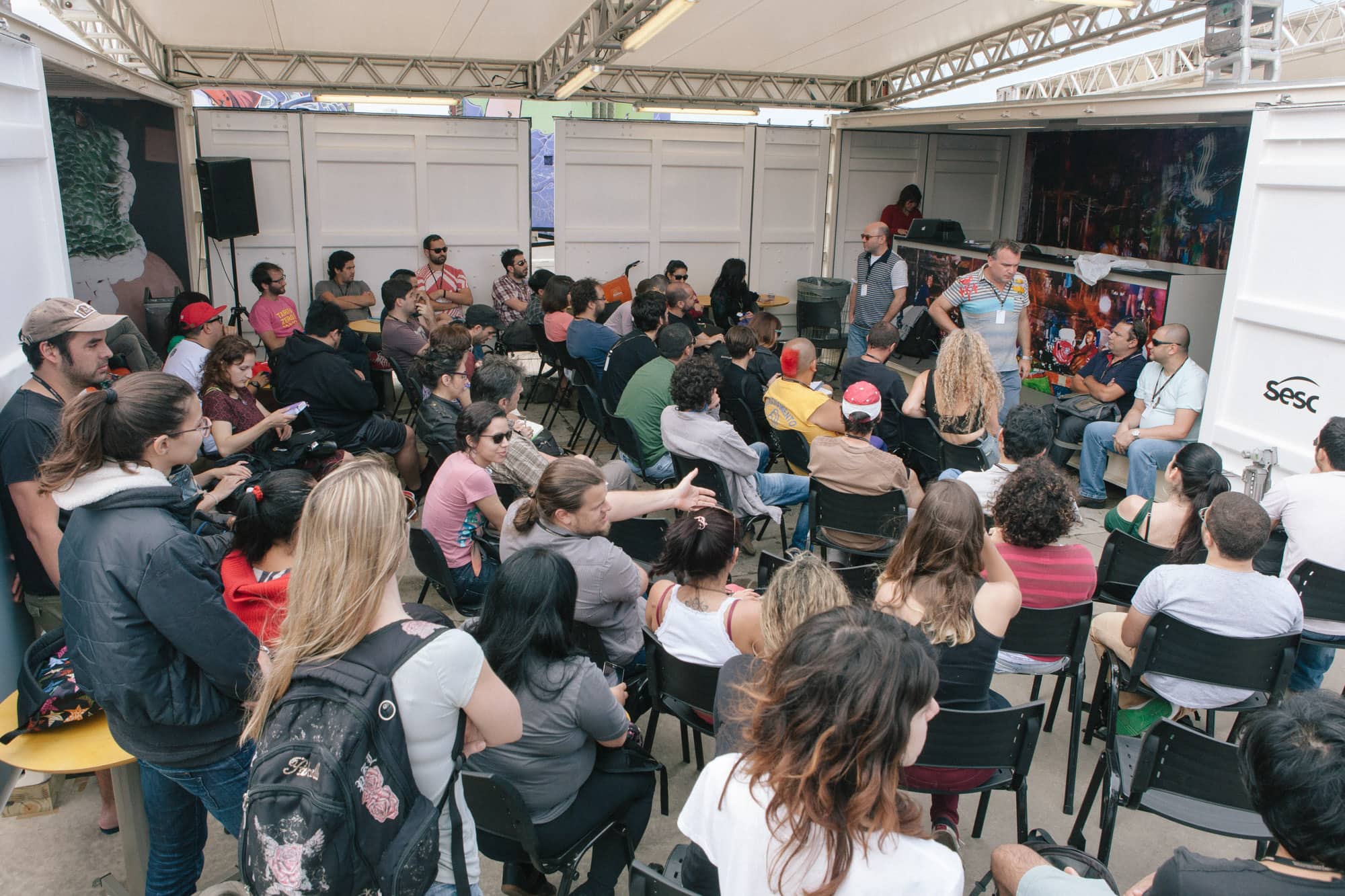
The fourth edition of E·CO brought about many significant changes, which I am calling the “image turn,” and the first one has been the change in the structure of the meeting: 1. From photographic collectives to transdisciplinary collectives; 2. From collective practices to collaborative practices. I want to focus on these two aspects in this text.
Photographic collectives have been a very important and illustrative phenomenon in Latin American photographic practices and have significantly shaped the photography scene in the first two decades of the 21st century. These groups were characterized by representing the union of photographers who acted jointly and non-hierarchically under the same name, seeking, through the combination of forces and efforts, to address the challenges faced in the artistic, photographic, and professional fields.
But before continuing, a note: if I allow myself to speak in the past here, it’s because I am thinking and analyzing the collectives that were active in the early 2000s. I’m not saying that there are no collectives in operation now, but I am looking back at the recent past because I can’t yet interpret the changes that have occurred in the field and what characterizes current collective formations, even because I perceive that their urgencies are no longer the same.
So, looking back, it’s possible to say that these groups were formed as a strategy to address individual difficulties, seeking to create opportunities against the deficiencies of the system and confront them. In other words, to face challenges in the profession, they appealed to collective action, the alignment of individual interests, the division of work and costs. In doing so, they maximized exposure, circulation, and distribution of their work, both collectively and individually. They also expanded their reach and access to opportunities and their various networks.
The context that allowed what I call the “collective boom” in my research was a Latin American scenario not very different from what we have today, but at that time, it was more severe and urgent: economic and political crises, market recessions, globalization, technological advances, digital and network culture, the dynamism of media, the strengthening of social movements for human rights, identity, and territory, the lack of public and cultural policies, the dismantling of cultural institutions, job instability, and changes in work models, among other factors. This context, where historical, social, political, and economic elements intersect, has given rise to various autonomous, community-based, and self-managed initiatives with an emphasis on horizontal collaboration, willing to experiment with new formats and find different solutions to address the problems experienced.
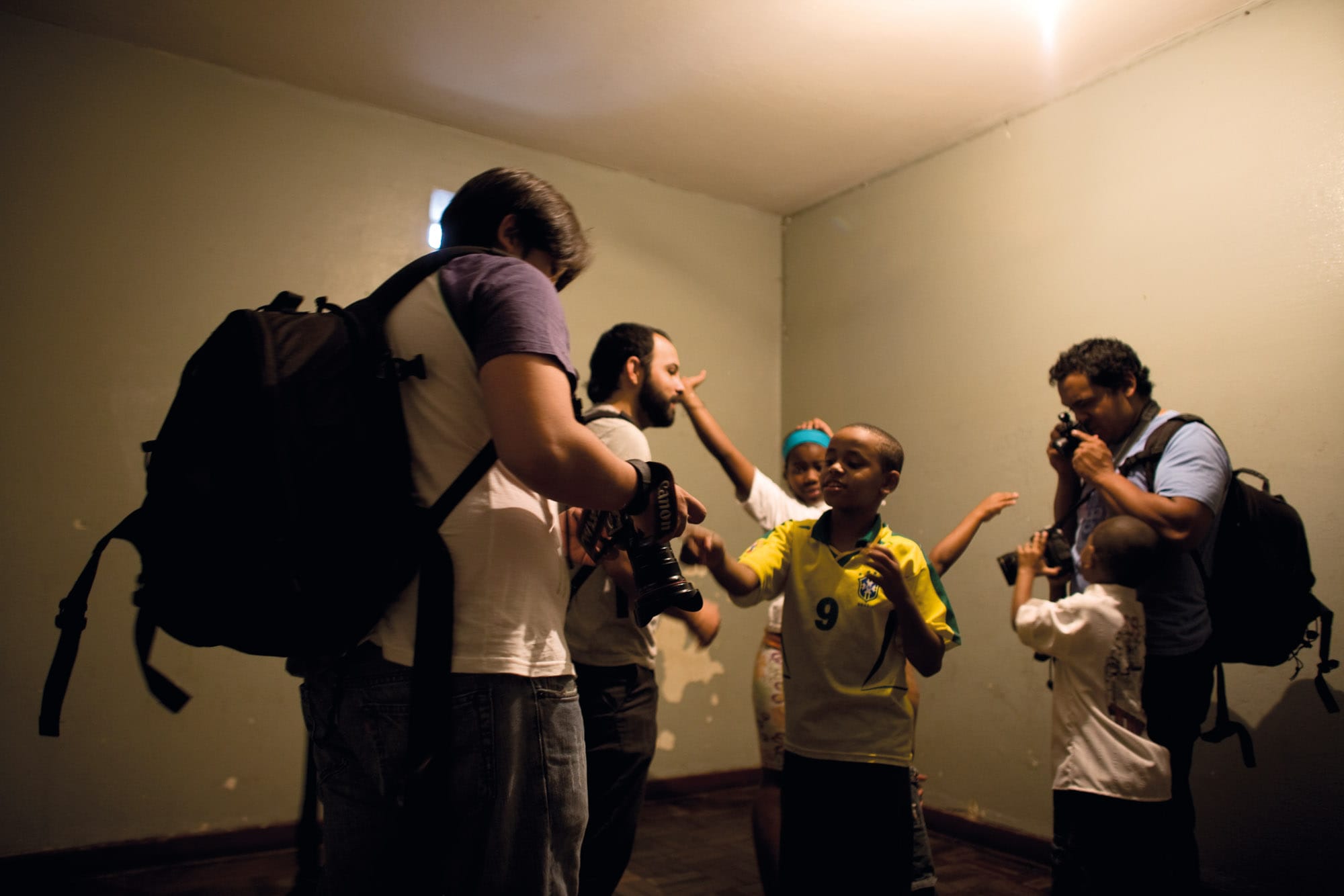
Throughout Latin America, photography has presented very interesting and stimulating cooperation and collaboration proposals, from organizing events and festivals, exhibitions, schools and photography galleries, creating graphic projects such as books and magazines, photo clubs, agencies, etc. Various initiatives were created to address the challenges felt in the region, promoting the association of people and institutions to achieve their goals and continue producing and disseminating images that could open dialogues and have an impact on Latin American society, generating spaces for meetings, enjoyment, reflection, critique, or denunciation. The processes carried out by these associations, their impacts and achievements, are catalysts and examples that contribute to the strong emergence of photographic collectives.
Among the main characteristics of the collective configurations that we have seen in the photographic field in the past decades, some highlighted parameters include autonomy, horizontality, independence, creativity, inventiveness, mobility, flexibility, adaptability, self-management, collective management, transdisciplinarity, trans-territoriality, recomposition capacity, dynamism, etc.
Of the various types of collectives that emerged during the observed period, what stood out the most was how each group responded exclusively to its specific demands and contingencies. They had their own personality and agenda. With approaches in their formats and dynamics, even some inspiring others, each group was very particular in its ways of being and working. The Brazilian collective Cia de Foto, for example, was born in São Paulo in 2003, and it existed for a decade and was one of the forerunners of collective signature in photography. Composed of Carol Lopes, Rafael Jacinto, Pio Figueroa, and João Kehl, the group carried out work for editorial and advertising purposes, alongside theoretical and experimental research rooted in questioning the context and meaning of images, challenging the place of photography itself.
Another very different example was the Cooperativa Sub, a cooperative of photographers in Argentina that, based on documentary work, sought to tell stories from real events. Established in 2001, it was composed of Gisela Volá, Nicolas Pousthomis, Gabriela Mitidieri, Gerónimo Molina, Martin Barzilai, Verónica Borsani, and Olmo Calvo Rodríguez. They worked with the cooperative concept, and their work process involved supporting each member in developing their individual projects with the group’s support and, at certain times, addressing issues collectively.
Regardless of their more specific ways of working, sharing and exchanging ideas, production, processes, results, and achievements or failures among the members were crucial in maintaining relationships and the continuity of a highly political form of practice.
Another element to highlight in the aspects that illuminate and give value to collective practice is the ability to challenge dominant conventions that prioritize individuality above all, as well as competition. In the field of photography, the figure of the photographer has historically been associated with the stereotypical image of the white, cisgender, bourgeois man. The idealized image of the “image hunter,” the intrepid and adventurous explorer who goes to the most remote corners of the world to “reveal” the reality of other cultures and territories, the holder of absolute truth, the sole narrative. Collectivity then appears in opposition to this romantic and colonialist ideal and challenges this widely disseminated and accepted image to this day.
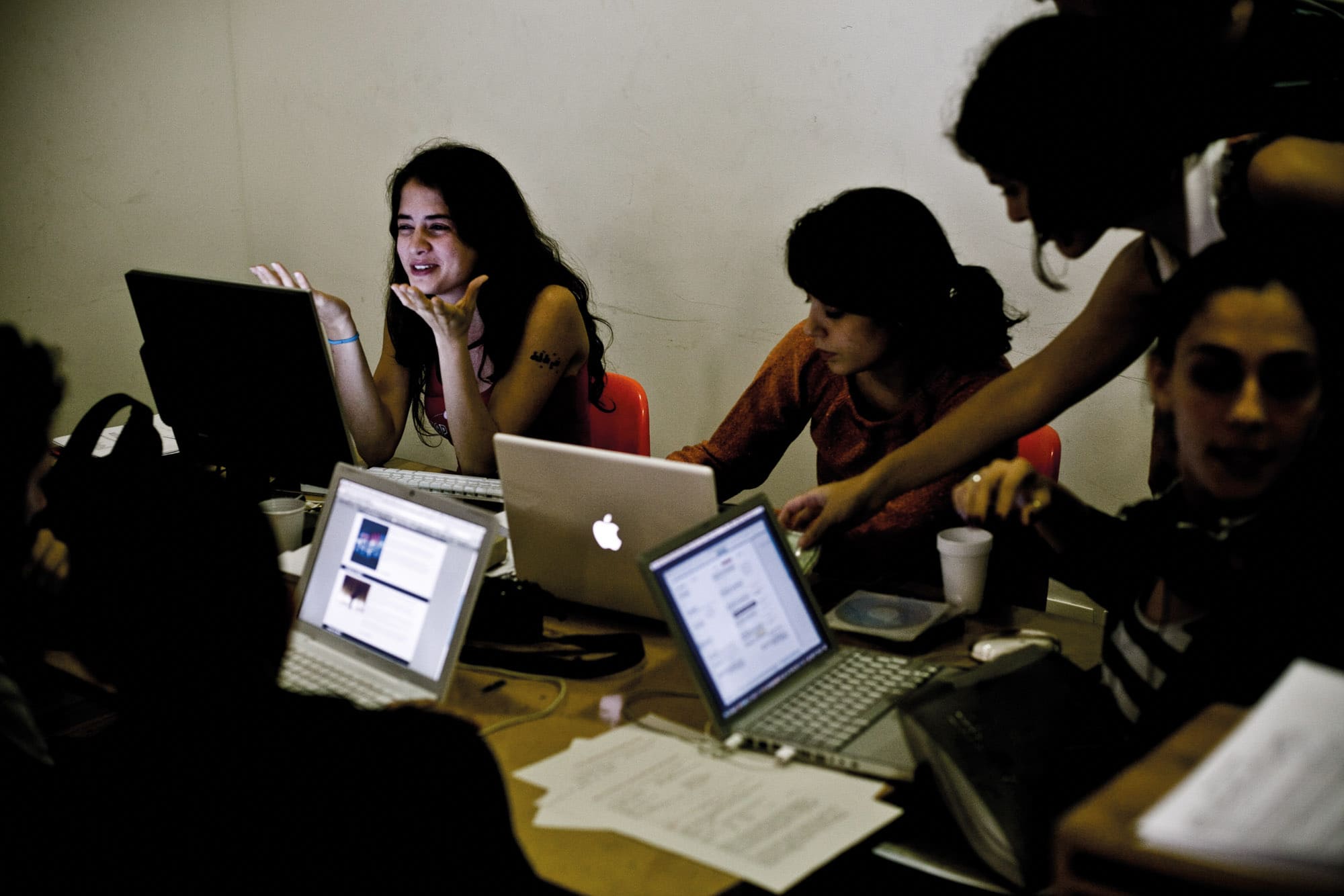
For just over two decades, we have seen countless photographic collectives being born and fading away, such as Versus Photo, Ruido Photo, No Photo, Pandora, Cia de Foto, Cooperativa Sub, Monda Foto, Supay Fotos, Fundación PH15, Mídia Ninja, Encontraste, 7Fotografía, Ágata, Colectivo Rolê, Observatório de Favelas, Blank Paper, Kamera Photo, Sin Motivo, La ONG (Organización Nelson Garrido), Mafia, etc. Some survived for many years, while others had a very short lifespan. The truth is that the trend passed, a few photographic collectives still struggle, and even rarer are the experiences of groups that have adapted to the times and remain active, such as Las Niñas, Nómada, Migrar Photo, War-mi Photo, Ruda Colectiva, and others. The reasons for this cooling are still not clear, but the fact is that times have changed. We are facing a pandemic in the middle of the road, and photography now faces other difficulties, in addition to the previous ones, but at this moment, they carry different weights.
It was following this movement of times and scenarios that E·CO/22 proposed a change in the invitation to participating groups, from photographic collectives to transdisciplinary collectives. The fourth edition then opened the doors to collectives that did not exist previously but were formed for the occasion and could participate. The idea was to provoke and stimulate groups formed not only by photographers but also by people from different disciplines and knowledge, seeking to foster other connections, delve into topics from different backgrounds, artistic practices, and research. The 8 collectives selected for that edition included journalists, writers, geographers, illustrators, anthropologists, videographers, etc.
The second change, almost as a consequence (planned) of the first, proposed the shift from collective practices to collaborative practices. If it was no longer necessary for registered groups to be strictly photographic collectives or even to exist previously, inevitably the transformation towards collaboration, even with the possibility of being temporary, opened the door to considering collaboration as an action that, very close to being confused with collectivity, suggests that it is no longer about formations exclusively among peers (photographers or artists), but rather involves different professionals, realities, universes, and disciplines, even opening up to listening and active participation from the same communities portrayed and challenging the ways of seeing and narrating. This allowed for an expanded collective consciousness about individuality and its ways of working, respecting different processes, experiences, and experiences that come together for a common and specific goal toward cooperation.
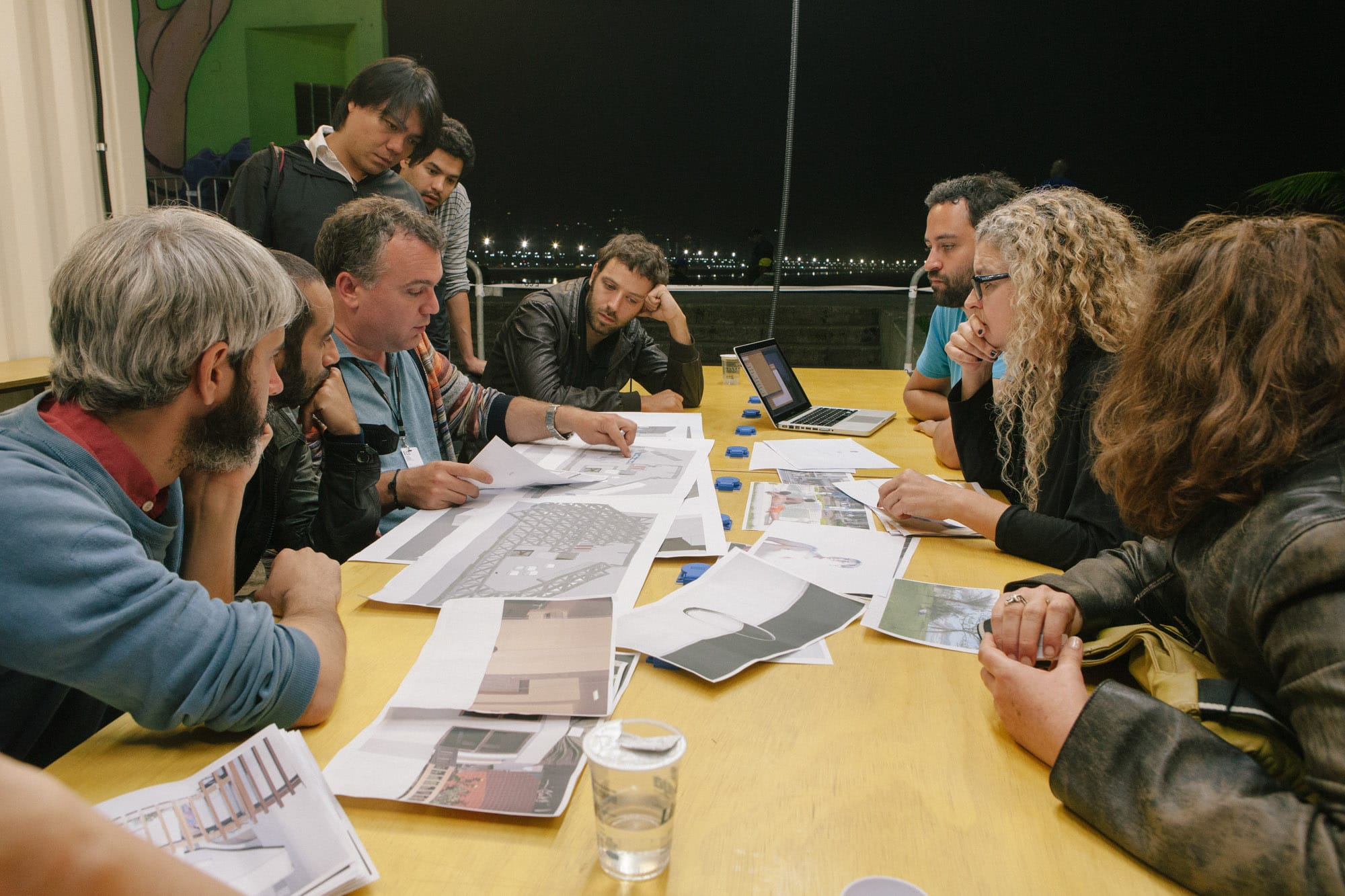
Long before photography, collective or collaborative practices hold very deep experiences of how we can approach, support, create, and work. We can and should draw inspiration from actions from other fields of knowledge and wisdom, whether they are community or scientific, from different cultures, imaginaries, and epistemologies. The movement initiated by E·CO is significant and sheds light on the subject, placing on the table the different ways in which we can work together, combining experiences and learnings to continue telling stories that deserve to be told, not from a single perspective, but in the complementarity of different approaches and ways of experiencing photography and the image.
